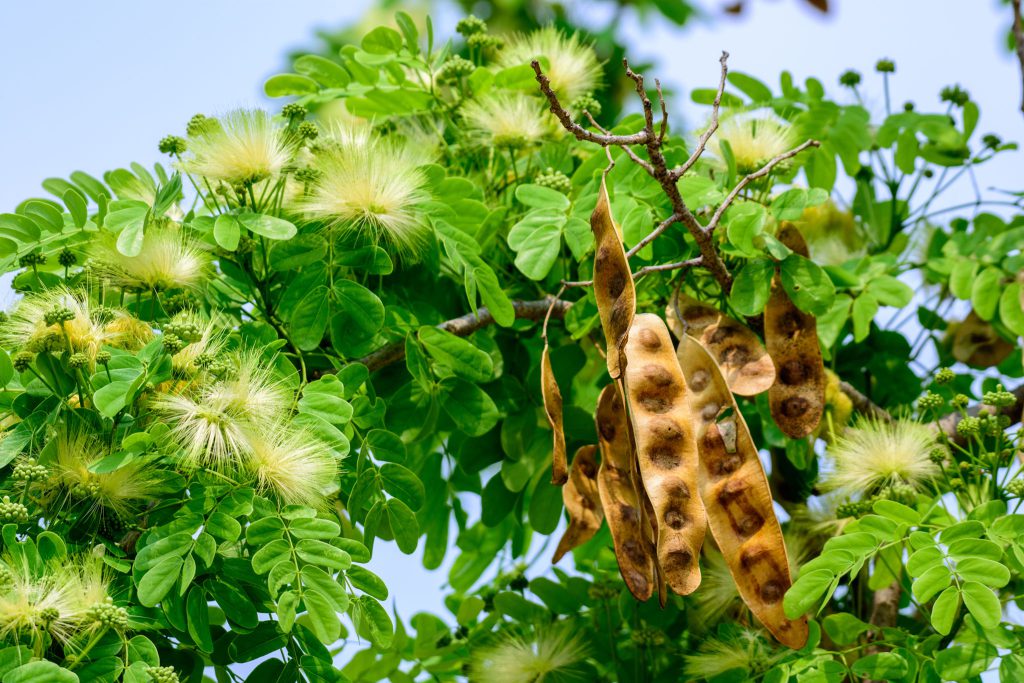Womans Tongue
Scientific name: Albizia lebbeck
Common names: Woman’s Tongue Tree, Lebbek Tree, Albizia, Silk Tree

The “woman’s tongue tree” is a common name for the Albizia lebbeck tree. This tree belongs to the Fabaceae family and is native to regions of Africa, Asia, and Australia. It is widely cultivated in tropical and subtropical regions for its ornamental value, shade-providing qualities, and various traditional uses.
The woman’s tongue tree is a medium-sized deciduous tree that can reach heights of up to 15-25 meters (50-80 feet). It has a spreading crown with feathery, bipinnate leaves composed of numerous small leaflets. The tree produces clusters of fragrant, cream-colored flowers that are attractive to bees and other pollinators. These flowers give way to long, flattened pods containing seeds.
The common name “woman’s tongue tree” likely refers to the sound made by the rattling seeds within the pods when they shake in the wind, which some people compare to the sound of women gossiping or chatting. This name may also reflect the tree’s widespread cultivation in regions where such cultural associations exist. It is often planted as an ornamental tree in parks, gardens, and along roadsides due to its attractive foliage, fragrant flowers, and graceful appearance.
Medicinal uses:
Various parts of the woman’s tongue tree, including the bark, leaves, and seeds, have been used in traditional medicine for their purported medicinal properties. Extracts from the tree have been used to treat ailments such as fever, diarrhea, skin conditions, and respiratory problems.